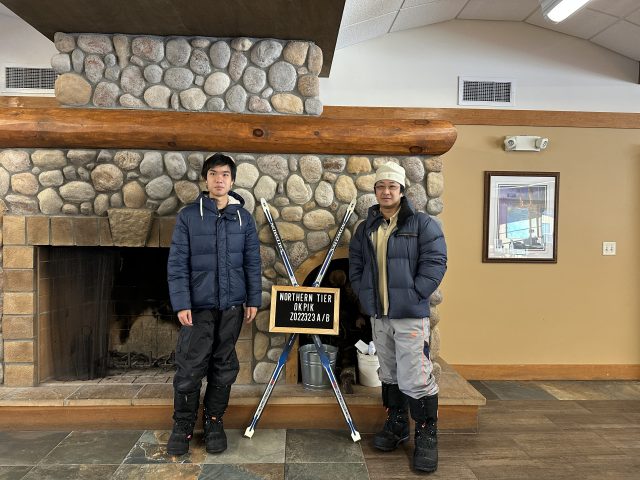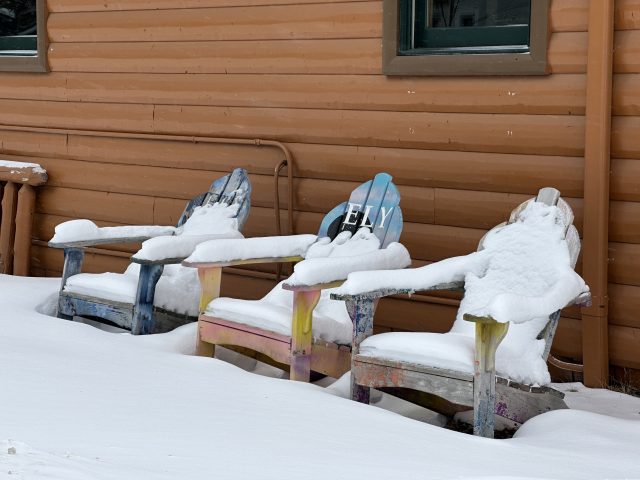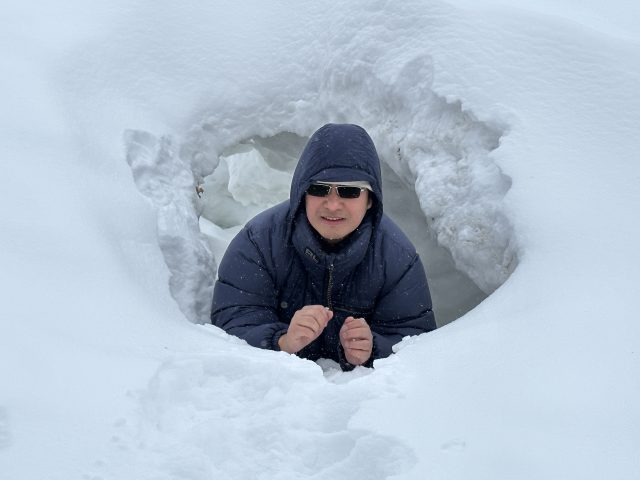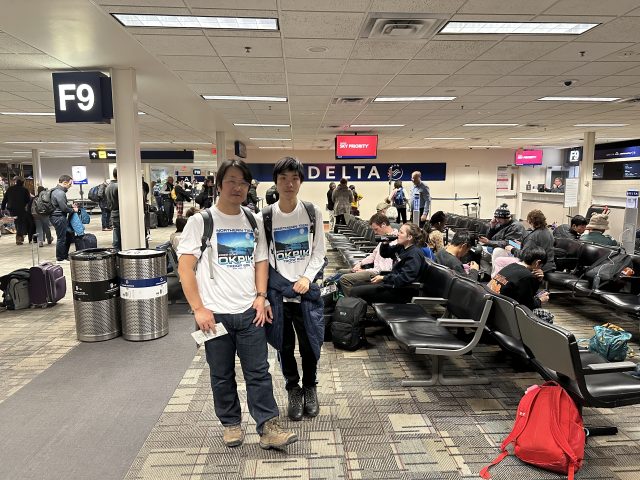Be prepared for the Trip to Northern Tier High Adventure
一年多前,當 Troop 495 的 Jeffrey 問我,他還有幾個 spot 要去 Northern Tier Okpik program ,看看我們 troop 有沒有 scout 有興趣可以一起參加。後來算一算,光是我們 troop 就可以組成另一個 crew,於是就有了這次的五個 CASA troops 組成的兩個 crews 的 Northern Tier 之旅。
Northern Tier base 位於明尼撒達州的北邊,接近加拿大的邊境。冬天很冷,也經常下雪。當初在做行程規畫的時候有考慮到天氣因素的影響,我們決定提早一天出發,先到 Minneapolis 過一夜,第二天一早再前往 Northern Tier base,如果飛機行程因為天氣因素有任何延誤的話,我們還有可以反應的時間。交通上,我們後來也決定參加 Blue Sky Adventure 的行程,對於在加州生活的我們來說,在雪地開車也會增加旅程上的風險。
果不其然,在我們出發的前一天早上,我接到 Blue Sky Adventure 打來的電話:在我們抵達 Minneapolis 機場之後大概兩個小時,暴風雪就會來了。為了不延誤我們的行程,他們必須當天就送我們到最接近 Northern Tier 的小鎮 – Ely, MN。如果行程耽擱到第二天才出發, bus 絕對不可能開得出城,我們後面的行程也會因此而延誤。而 Ely 那邊只會下小雪,我們的 High Adventure 行程應該也不會被耽誤。
雖然我們因此而錯過了半天可以逛逛 Minneapolis 市區的機會,卻可以到 Ely 這個溫馨的小鎮過一晚,帶著一群 scouts 在下雪的夜晚走路到附近的超市買晚餐,這個經驗對於在加州長大的小孩來說,應該也是另一個收穫。
第二天中午,Northen Tier 派車來載我們去 Northern Tier base。司機說,我們是幸運的一群。其他 Crew 的班機因為大雪而取消,這個週末只有我們這兩個 Crews 可以趕上行程。住在 base 的 cabin 還有整個浴室、 spa ,都歸我們專用,也算是因禍得福吧!
在 base 的 cabin 度過有暖氣且舒服的一晚之後,我們用 sled 拖著行李前往 flash lake ,要在湖上過一夜。這兩天的天氣時陰時晴,偶而下點雪。氣溫在華氏零下10到20度之間。光是 0.9 miles 的路程就花了我們將近 50 分鐘才到達。在這種極端的環境之下,要滿足基本的食衣住行就不是件容易的事。飲用水即使放在水壺裡面也很快因為外面溫度過低而結冰,因此我們每個人身上的衣服裡面都背著一個大概 300 ml 的小水壺,利用體熱保溫,隨時可以補充水分。到達營地的第一件事就是要在結冰的湖上挖洞取水,並將水煮沸之後才可以讓大家繼續補充自己的小水壺。
在寒冷的野外過夜,最重要就是要有個可以避風的地方,因為冷風會讓體溫流失特別快。比較好的方法是堆個大雪堆蓋 quinzhee ,蓋一個兩人份的 quinzhee 大概要三個人花四、五個小時的時間。更簡單的就是蓋個 wind break ,其實就是用雪堆圍成一個 U 字型的擋風牆。反正在這麼冷的天氣,即便下雪,身上的衣物也不會濕掉,拍一拍就好。我們每個人都有多帶一套的備用衣物跟手套等,這些備用衣物也都可以拿來放在我們睡袋下面的兩層睡墊中間,可以增加 sleeping system 的保溫效果。就連我們就寢之前,每個人的小水壺還會裝好熱水,先放到睡袋裡面幾分鐘再躺進去,才不會讓體溫一下子流失太快。這些所有的小細節都是要確保我們在這極端的環境之下,還可以安全的從事戶外活動。
至於衣物的準備,其實也沒有想像中的複雜。身上穿的衣物主要分成三層:貼身內衣褲只要買市面上長袖跟長褲的 base layer 也就夠了;中間可以穿厚一點的毛線衣或運動衫,在野外的運動量大,選擇容易排汗的材質才不會因為衣服濕掉而覺得冷;最外面是一件有帽子的擋風夾克,我是穿一件稍微厚一點的羽毛外套,走路的時候會有點出汗,不過即使在晚上也覺得暖活。至於鞋子跟手套,會建議直接穿 Northern Tier 提供的就好,品質好也非常保暖。
參加各個 High adventure 是每個 senior scout 挑戰自我的最好機會。從極南的佛羅里達 Seabase 到極北的 Northern Tier, 從最有歷史的 Philmont 到 2014 才成立的 Summit High Adventure,每個 High Adventure 都讓參與的童軍留下畢生難忘的回憶。在面對這些挑戰自我的時候,也一定要做好充分的準備,謹記 scout motto – be prepared,才能讓這些旅程過得安全又盡興。
Be prepared for the Trip to Northern Tier
Over a year ago, when Jeffrey from Troop 495 asked me that he has several spots left for the Northern Tier Okpik program, he wondered if any scouts from our troop would be interested in joining his crew. After doing the headcount, I realized that we had enough scouts in our troop to form another crew, which led to the two crews composed of five CASA troops taking this trip.
The Northern Tier base is located in the north of Minnesota, close to the border with Canada. It gets very cold in winter and it snows frequently. When planning the itinerary, we took into consideration the impact of winter weather and decided to arrive one day early and spend a night in Minneapolis before heading to Northern Tier the next morning. This allowed us some reaction time in case of any flight delays due to weather conditions. We also decided to participate in Blue Sky Adventure’s program for transportation, which reduced the risk of driving in snowy conditions for those of us who live in California.
As expected, on the morning before our departure, I received a call from Blue Sky Adventure warning me that a blizzard was coming about two hours after we arrived at the Minneapolis airport. In order to avoid any delays in our itinerary, they had to take us to the nearest town to Northern Tier, Ely, MN, on the same day. If we had delayed our departure until the next day, the bus would never have made it out of the city. Ely was only expected to receive light snow, so our subsequent itinerary was not expected to be delayed.
Although we missed the opportunity to explore Minneapolis city for half a day, we were able to spend a night in the cozy town of Ely and walked with a group of scouts to a nearby supermarket for dinner on a snowy night. This experience was an additional gain for kids who grew up in California.
The next day at noon, Northern Tier sent a car to take us to the Northern Tier base. The driver said we were lucky crews. The flights of other crews were canceled due to heavy snow, and only our two crews were able to catch up with the itinerary during this weekend. The cabin where we stayed at the base, as well as the entire bathroom and spa, were all reserved for us, so it was a blessing in disguise!
After spending a comfortable night in the base cabin, we dragged our luggage with sleds to Flash Lake to spend the night on the lake. The weather was cloudy and occasionally snowy during these two days. The temperature ranged between minus 10 to minus 20 degrees Fahrenheit. It took us nearly 50 minutes to walk a distance of 0.9 miles. In such an extreme environment, satisfying basic needs for food, clothing, shelter, and transportation was not an easy task. Even drinking water in a kettle would freeze quickly due to the low outside temperature. Therefore, each of us carried a small water bottle of about 300ml inside our clothing, using body heat to keep the water warm and replenishing it anytime. The first thing we did upon arriving at the campsite was to dig a hole on the frozen lake to get water, and boiled it before refilling our personal small water bottles.
When camping in cold weather, the most important thing is to have a shelter that can block the wind, as the cold wind can cause body heat to be lost quickly. A better method is to build a quinzhee by piling up a large snowdrift and digging out a space so people can stay inside after the snowdrift is settled for 4 to 5 hours. Building a quinzhee for two people takes about four to five hours with three people working on it. Alternatively, a simpler way is to build a wind break by forming a U-shaped wall with snowdrifts. Even if it snows, the body won’t get wet due to the low temperature, and a quick shake will remove any snow on clothing.
Each person brings an extra set of clothing, gloves, and other necessary items. These extra clothes can be used to fill the space between two layers of sleeping pads under our sleeping bags, which can improve the sleeping system’s insulation. Before going to bed, each person also fills their small water bottle with hot water, letting it sit inside the sleeping bag for a few minutes before getting in. This prevents body heat from being lost too quickly. Paying attention to these details ensures that we can safely engage in outdoor activities in such extreme environments.
As for clothing preparation, it’s actually not as complicated as you might think. The clothing worn on the body is mainly divided into three layers: for the base layer, you only need to buy long-sleeved and long-legged base layers that are available on the market; for the middle layer, you can wear a thicker sweater or sportswear. For outdoor activities, choose materials that are easy to sweat out to prevent clothes from getting wet, once the clothes get wet, you will feel cold quickly. The outermost layer is a windproof jacket with a hood. I wore a slightly thicker down jacket, which made me sweat a little while walking, but even at night, I felt warm. As for shoes and gloves, it is recommended to wear the ones provided by Northern Tier as they are very warm with high quality materials.
Participating in various High Adventures is the best opportunity for every senior scout to challenge themselves. From Seabase in the extreme south of Florida to the Northern Tier in the extreme north of Minnesota, from Philmont with its most traditional high adventure experience to Summit High Adventure, which was just established in 2014, each High Adventure leaves unforgettable memories for participating scouts. When facing these challenges, it is essential to be well-prepared and remember the scout motto – “Be Prepared” – to ensure that these journeys are both safe and enjoyable.




